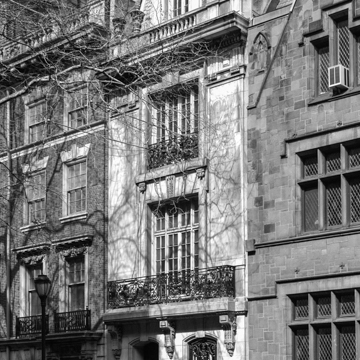This limestone Beaux-Arts town house is a New York–style interloper for E. C. Knight, who chose the favorite architect of nouveau riche Philadelphia, Horace Trumbauer, for his city and Newport houses. Here Trumbauer imaginatively solved the problem of entrance into a town house with a grand spiral stair set into the center of the house with large front and rear rooms off the hall.
The immediate neighborhood is rich in notable turn-of-the-twentieth-century houses. At the northeast corner of S. 17th and Locust streets is the Carlton Yarnall House (1908, Frank Miles Day) with the broad, pebblefilled pointing and paired stretchers of the University Museum ( PH147.8); the E. R. Wood House (1888) at 235 S. 17th Street is also by Day. Across the street at number 242 is a remarkable late medieval Roman Revival facade of yellow brick, c. 1888, with rich terra-cotta detail by the eccentric but brilliant New Jersey architect William Halsey Wood (see TI9).







